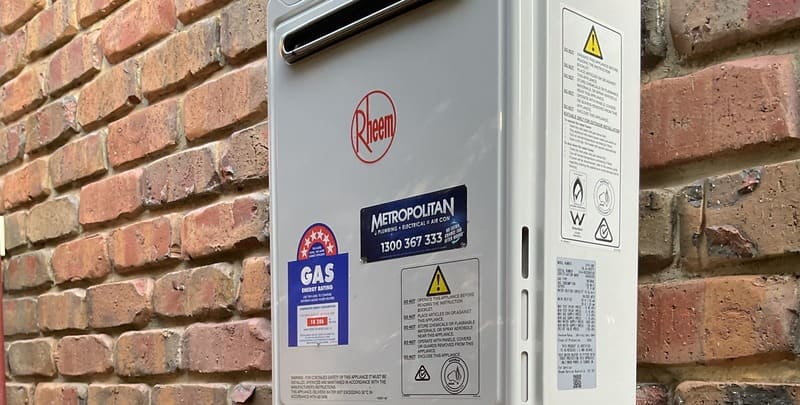Have you ever dealt with leaky pipes, noisy plumbing, or frequent appliance failures at home? You might not realize it, but excessively high water pressure could be the hidden cause. That’s where a pressure-limiting valve (PLV) becomes essential for protecting your home's plumbing system.
Many homeowners overlook the serious damage that high water pressure can do to their pipes, hot water systems, and appliances. Without proper regulation, this pressure can lead to costly repairs, leaks, and even early failure of key components. This is why pressure-limiting valves are so important—let’s explore what they are and why you might need one.
What Is a Pressure Limiting Valve?
A pressure-limiting valve, often called a PLV, is a critical device designed to protect your home’s plumbing from the damaging effects of excessive water pressure. It works by reducing the incoming water pressure to a safe level before it reaches your pipes, fixtures, and appliances.
When water enters your home, the valve ensures that the pressure doesn’t exceed safe limits, preventing leaks, pipe bursts, and unnecessary wear on your plumbing. These valves are typically installed near the main water supply line or water meter and can be adjusted by a professional plumber to suit your home’s specific needs.
Installing a pressure-limiting valve not only helps your home meet Australian plumbing standards but also protects your entire system from pressure-related issues, saving you money in the long run.
Signs You May Need a Pressure Limiting Valve
If you're experiencing problems like strange noises in your pipes, frequent leaks, or appliances breaking down more quickly than expected, high water pressure might be the culprit. Here are some signs that you may need a pressure-limiting valve:
- You hear loud knocking or rattling sounds in your pipes, especially when using water—this is known as “water hammer.â€
- Leaks or burst pipes occur regularly, even if they seem small.
- Your hot water system or other appliances are showing signs of stress or failing prematurely.
- Your plumbing fixtures and water meter are wearing out faster than normal.
- The water pressure in your home exceeds the recommended level (500 kPa in Australia).
If you notice any of these issues, installing a pressure-limiting valve can help prevent further damage and save you from expensive repairs down the road.

How a Pressure Limiting Valve Protects Your Hot Water System
High water pressure can significantly affect your hot water system, causing it to work harder and wear out faster. A pressure-limiting valve helps reduce this strain, ensuring your hot water tank and other appliances operate smoothly without unnecessary stress.
This protection extends to other household appliances such as dishwashers and washing machines, which can also suffer from excessive pressure. By keeping water pressure within safe limits, a PLV helps prolong the life of your plumbing system and saves you from unexpected breakdowns and repair costs.
Why You Should Hire a Professional for Installation
While it might seem like a simple task, installing a pressure-limiting valve should be handled by a licensed plumber. They will assess your home’s plumbing system and determine the best location for the valve, usually near the main water supply or meter.
A professional installation ensures the valve is set to the correct pressure range for your home, providing maximum protection against damage. It also guarantees that the installation meets local plumbing codes and safety standards, giving you peace of mind that your system is properly protected.
Attempting to install it yourself can lead to mistakes that could cause more harm than good, so it's always best to leave it to the experts.
Common Myths About Pressure Limiting Valves
There are many misconceptions about pressure-limiting valves that can confuse homeowners. Here are a few common myths and the facts behind them:
- Myth: Pressure-limiting valves reduce water flow. Fact: They only control pressure, not flow rate.
- Myth: All pressure valves are the same. Fact: There are different types, including adjustable and fixed models, to suit various needs.
- Myth: They’re only needed for older homes. Fact: Even new homes can experience high water pressure due to municipal supply lines.
Understanding the truth about pressure-limiting valves can help you make better decisions for your home’s plumbing system.
Take Action to Protect Your Home
Installing a pressure-limiting valve is a simple yet effective way to safeguard your home from the damaging effects of high water pressure. By regulating the pressure entering your system, these valves help prevent leaks, bursts, and premature wear on your plumbing and appliances.
In addition to extending the lifespan of your fixtures and systems, a PLV also ensures your home meets Australian plumbing standards. If you're unsure whether your home needs one, consult a professional plumber to assess your situation and recommend the right solution.
Please note: This information is for general advice only. Regulations vary by state, so always consult local authorities or a licensed professional before making any plumbing changes. For more details, see our Terms & Conditions here.
PVC CPE EVA Plastic Zipper Packaging Bag
Plastic Zipper Packaging Bag,Pvc Zipper Packaging Bag,Cpe Zipper Packaging Bag,Eva Zipper Packaging Bag
Dongguan Pasike Packaging Co., Ltd. , https://www.dgpasike.com